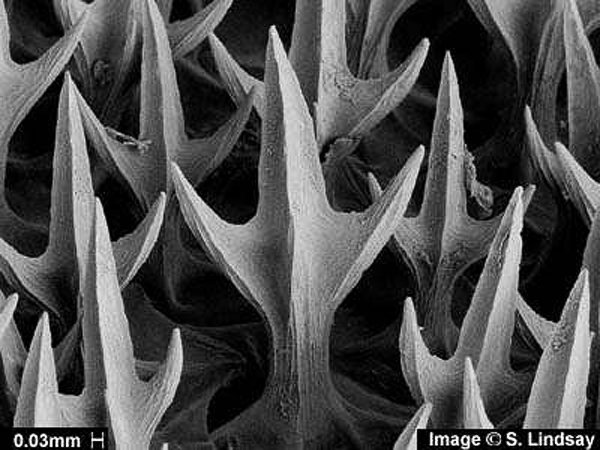Brier Shark, Deania calcea (Lowe, 1839)
The Brier Shark is a deepwater species that lives on continental and insular slopes. The species is normally light or dark grey to dark brown.
Identification
The genus Deania contains a second Australian species, the Longsnout Dogfish, Deania quadrispinosa. The most obvious difference between them is the shape of the first dorsal fin. In the Brier Shark it is long and low, but the first dorsal fin of the Longsnout Dogfish is higher and has a shorter base. The Brier Shark is normally light or dark grey to dark brown.

Scales of a Brier Shark (0.03 mm scale).
Image: Sue Lindsay© Australian Museum
Habitat
The Brier Shark is a deepwater species that lives on continental and insular slopes. It is usually recorded from depths of 400 m to 900 m, although it has been recorded from as shallow as 70 m and to depths of 1450 m.
Distribution
The Brier Shark occurs in the eastern Atlantic and the eastern and western Pacific. In Australia it is recorded around the south of the continent, from northern New South Wales to south-western Western Australia and Tasmania.
Feeding and diet
The species feeds on fishes and crustaceans.
Life history cycle
Pups are born at about 30 cm, and both males and females mature at about 70 cm.
Economic impacts
The Brier Shark is not an important commercial species in Australia. In some countries however it is targeted for its liver which has a high squalene content. Squalene is an oil produced in the liver of some sharks.
References
- Last, P.R. & JD Stevens. 1994 Sharks and Rays of Australia. CSIRO. Pp. 513.
- Stevens, J.D. in Gomon, M.F, Glover, C.J.M. & R.H. Kuiter (Eds). 1994. The Fishes of Australia's South Coast. State Print, Adelaide. Pp. 992.


